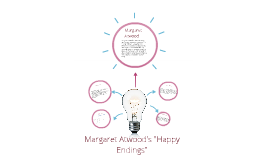

If, for instance, you ever wondered why Aunt Lydia seems so willing to join the regime’s monstrous attack on her own gender (despite a queasily hinted at softer side), here’s her backstory. What follows is a plump, pacy, witty and tightly plotted page-turner that transports us straight back to the dark heart of Gilead and seems to take great pleasure in providing answers to many of Atwood’s readers’ questions. Atwood has always said that “knowledge is power”, but will Aunt Lydia use her power for good or evil? Atwood challenges us to think and rethink, to see our volatile world anew Aunt Lydia, meanwhile, who is “everywhere and nowhere”, knows everything that they (and we) don’t know. And Agnes, who used to think she remembered nothing before the age of six or seven, realises she does have one “hazy memory of running through a forest with someone holding my hand”. Certainly, right from the start, Daisy lets slip that she discovered on her birthday that she was a “fraud – a forgery done on purpose”. How these young women may or may not be connected – to one another and also, in Daisy’s case, to Gilead – is one of the questions that drives the first hundred pages or so of the novel. The third, Daisy, is a feisty teenager living in Canada with two people who run a thrift store and whom she supposes to be her parents, except that something has always felt wrong: “It was like I was a prize cat they were cat-sitting.”

The second is Agnes, a young woman who has grown up in Gilead and is being groomed (in both senses of the word) to marry a commander. The first belongs to Aunt Lydia herself, who is secretly writing her memoirs, apparently largely “for your edification, my unknown reader”. The novel is narrated by three different female voices. Meanwhile, a great deal of effort and espionage are going into tracking down missing Baby Nicole – now seen as the veritable “poster child for Gilead” – so that the republic can reclaim her as their own. This – together with the constant “seepage” of handmaids being helped to freedom by the so-called Underground Femaleroad – has not been good for Gilead, which has settled into an inevitable “dog-eat-dog maturity”. The “child” of Commander Waterford and his wife (though in fact, as we all know, born of Offred/June and fathered by her lover, Nick), Nicole was smuggled into Canada as a baby and has not been seen since.
HAPPY ENDINGS MARGARET ATWOOD PERSON SERIES
Perhaps wisely, Atwood neatly leapfrogs the TV series – presumably leaving it open for several more seasons – while plucking just one significant detail from it: Baby Nicole. This novel opens 15 years after the end of the last book. If ever a novelist could justify the spawning of a sequel, Atwood can. Given all of this history – and the fact that for 35 years fans have apparently been begging for answers to a host of Gilead-related questions – it’s not surprising that The Testaments feels as eagerly awaited as a handmaid’s bouncing baby. Who, after all, is Donald Trump if not Commander Waterford without the charm? And I can’t be the only one who, watching the Trump crowd’s chants of “Lock her up!” or “Send her back!”, found herself thinking of taser-wielding Aunt Lydia and the handmaids’ cries of “Her fault!” when one of their number “confesses” to having been gang-raped? With the implacable rise of the Christian right in the US, never has it felt more urgent for women to guard both their bodies and their reproductive systems against (some) men and the state. Still, no one could have guessed the extent to which recent history (as well as a superb TV offshoot) would bring it eerily, terrifyingly back into focus. The newly born Republic of Gilead, with its abuses and abominations, its hideously misogynistic vocabulary and gruesomely rationalised constraints, was just about far enough from our own world to seem beguiling, but also close enough to feel like a wake-up call.

Those of us lucky enough to read The Handmaid’s Tale back when it first appeared in 1985 will remember the shock of a novel that felt both claustrophobically precise and shatteringly prescient.


 0 kommentar(er)
0 kommentar(er)
